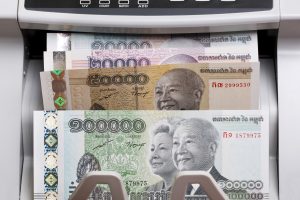Over-optimistic assumptions about the transformative impact of microfinance loans on the incomes of borrowers have been a consistent feature of the industry for years. Over-valuation of the assets used as collateral for the loans is more unusual, as a realistic appraisal of asset values of the borrowers helps to keep repayment projections real.
Yet in Cambodia, the rate of non-performing loans (NPLs) at microfinance lenders is higher than publicly disclosed, with many loans having been based on expectations of rising land prices which proved to be well off target, sources say.
A survey of loan officers which has yet to be published shows that the NPL rate is continuing to increase, with many microfinance loans being taken to refinance existing borrowings and based on future land price appreciation, according to a person familiar with the survey. Distressed sales of land mean that prices are falling rather than rising, the person said. The speculative nature of many existing loans, which assumed that land prices would continue to increase, was confirmed by a separate person working at a major Western bank in Cambodia.
Cambodian land prices have seen a serious correction in recent years. Average prime residential and office land prices in Phnom Penh dropped by 34.5 percent and 35.7 percent, respectively, between the second quarter of 2020 and the second quarter of 2024, according to an index published by Knight Frank. Over a third of landed property projects due to complete in 2023 were either delayed or deferred, according to real-estate consultancy CBRE Cambodia.
The country’s banks have been under pressure as the post-COVID-19 economic recovery has failed to materialize. A microfinance loan portfolio which in March 2023 stood at over $16 billion for a country of 16 million people is a major part of the problem. ACLEDA Bank, Hattha Bank, and LOLC all breached covenants on their own borrowings in 2023, according to S&P Global. Delays in the recognition of weak loans are part of the problem, says S&P, which expects that the number of banks to have breached their covenants is in fact higher. The agency forecasts that NPLs in Cambodia’s broader financial system will increase to between 7.5 percent and 8 percent of total loans in 2026.
The Cambodian economy has had its most serious downturn in more than two decades, so it’s natural that banks will feel the pain, says Stephen Higgins, managing partner of Mekong Strategic Capital in Cambodia. The finance sector in Cambodia is very well capitalized, he says, and “arguably has too much capital. So they’ll certainly weather the storm.” Credit growth in Cambodia in future won’t be as high as in the last 10 years, which is a welcome change, Higgins says. Annual credit growth of above 20 percent was “simply too high and unsustainable, and moving back to around 10 percent will be a good thing.”
Microfinance NPLs in Cambodia in the past have been kept down by a combination of “coping strategies” such as migration and juggling debt between lenders, says W. Nathan Green, assistant professor at the National University of Singapore. There’s no certainty as to when NPLs will come back down, Green says, adding that consolidation in the industry is in prospect. Yet Green sees no signs of a a rethink among foreign investors in Cambodian microfinance. “Commercial investors continue to see Cambodia as a growth market,” especially for lending to small and medium-sized enterprises.
Some argue that the damage has already been done. “The uncontrolled explosion of microfinance debt in Cambodia has come at a huge human cost,” says Mu Sochua, president of the U.S.-based Khmer Movement for Democracy. “Repossessions of land and property have been increasing, with borrowers having no legal way to defend themselves from a repossession demand.” Former Prime Minister Hun Sen, now president of the country’s Senate, has “worsened the situation by actively encouraging banks to repossess.”
“Families have been broken apart by the need for young people to go to Thailand to work to service microfinance loans,” Sochua says, adding that lenders will often only provide a loan if there is at least one family member working in Thailand.
“The banks know that the Cambodian economy has no way of absorbing the burden of the debt to be repaid through employment. Many young parents are forced to leave their children to be looked after by their own elderly parents. Child labor is also a proven consequence of microfinance borrowing in Cambodia. Children are being forced out of school to help service microfinance loans.”
Sochua doubts that there’s any quick fix in a context of weak regulatory capacity. “The covenant breaches at the banks show the strain that the debt burden is placing on a financial system which lacks a proper regulatory structure,” she says. “The attempts to regulate now are too little, too late, and regulators in any case lack the effective power to enforce new regulations.”

































